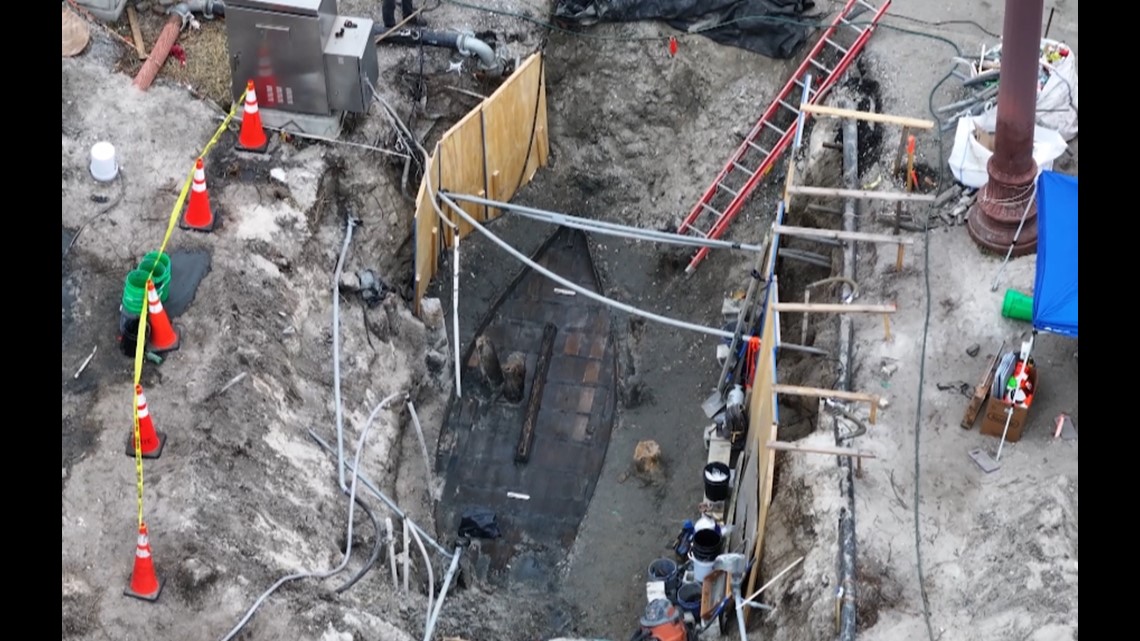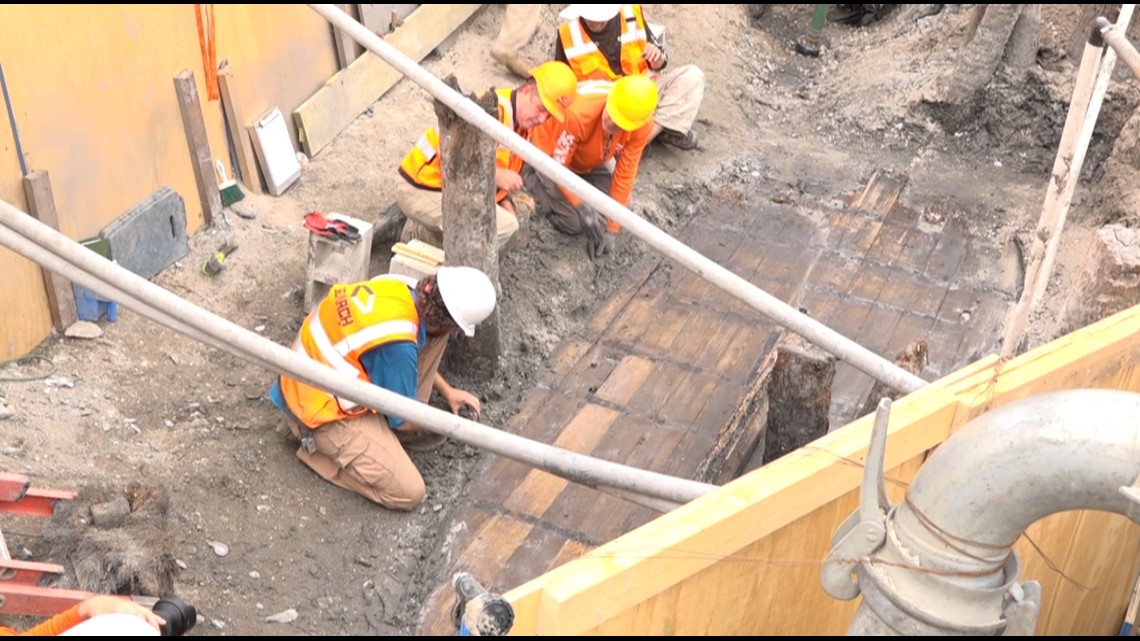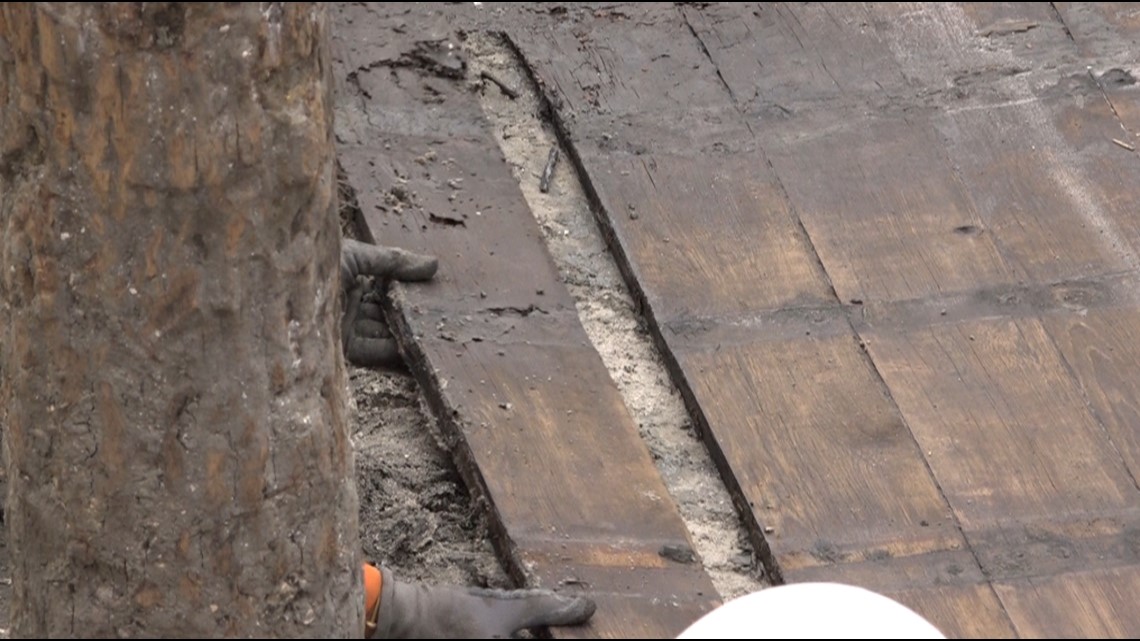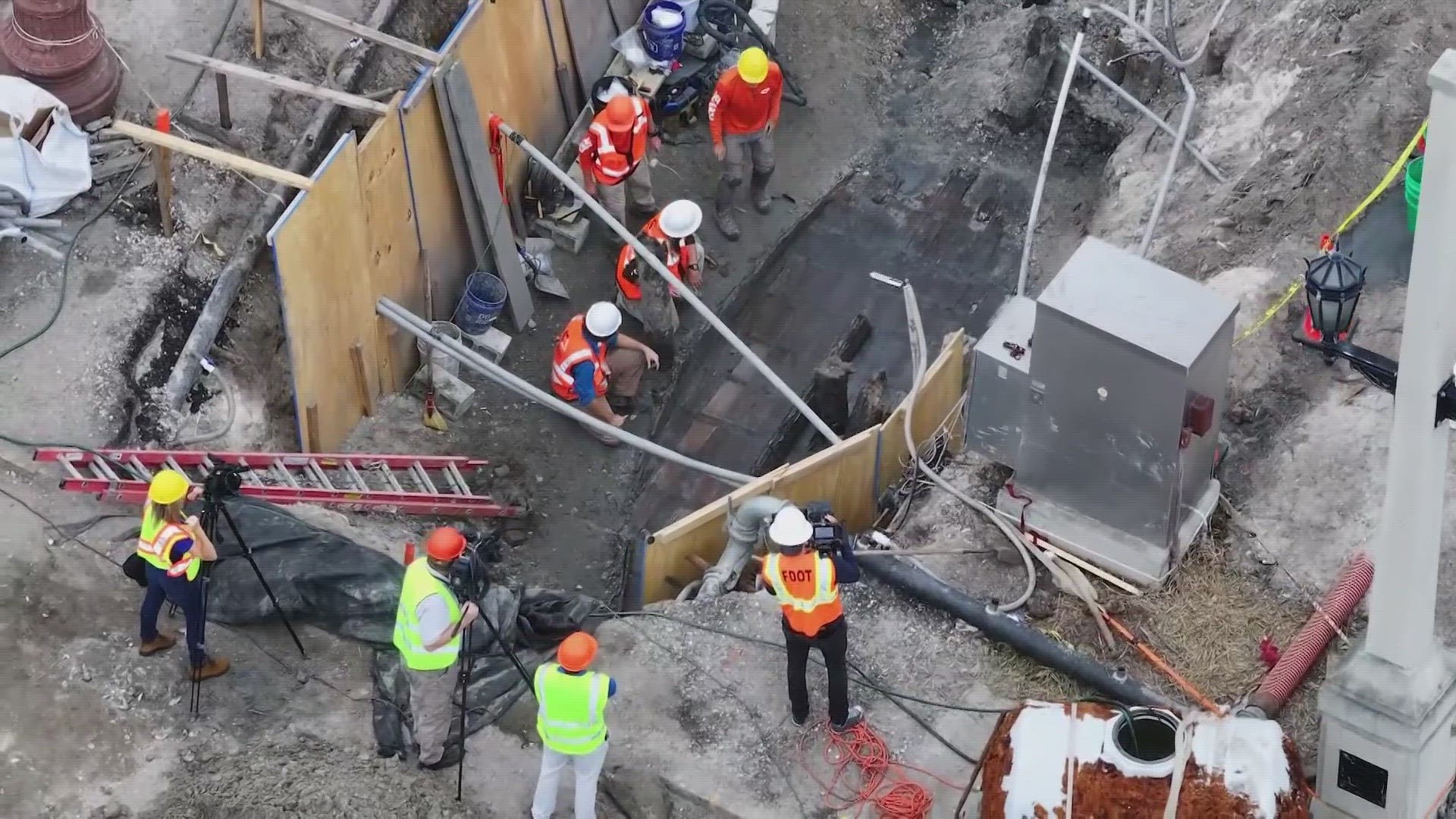ST. AUGUSTINE, Fla. — How do you take apart a 19th Century boat that's been covered in mud for more than 200 years?
Very carefully, of course.
Actually, it's plank by plank.


At the downtown base of the Bridge of Lions in St. Augustine, a construction project turned into an archaeological dig Friday, when crew members spotted wood, old wood.
"We just found a boat from the 1800's," Secretary Greg Evans with the Florida Department of Transportation said. Construction stopped and archaeologists were brought in.
"We had archaeologists on standby because we always find something in St. Augustine," Evans noted.


Wednesday, five days after the discovery, archaeologists with SEARCH, Inc. had unearthed, cleaned, and documented the boat. The bottom wooden part of the boat almost gleamed in the sunlight. The boat's deck that 19th century fisherman would have stood on had been only a few inches higher than the boat's bottom. The deck had already been removed by archaeologists earlier in the week.
Wednesday, scientists loosened each plank of the boat's bottom that sat in the wet dirt. Each was cautiously lifted up, placed on wooden trays, and hoisted out of the 8-foot-deep hole.


The boat is in amazingly good shape. Archaeologists say it was likely a sailing vessel because because of evidence that points to place for a mast. Dr. James Delgado with SEARCH, Inc. said he believes it was locally built.
"We think the boat may have been abandoned," Evans said, "and over time it was silted-in. That is why it was preserved because it was encapsulated in soil, so there was no air contact for it to decay."
Archeologists also found artifacts in and around the boat, such as nails and coins.


Also among the artifacts: leather shoes. On one of them, fine stitching is still recognizable as well as eyelets for the laces.
Other coinage was discovered. They coins are thicker than most money, which leads some of the archaeologists with SEARCH, Inc. to wonder if they were trolley tokens connected to the trolley station that was near site.
Those items and the boat's craftmanship help date it to the 19th century.
The bow of the boat was well preserved, but the stern seemingly disappears; the wooden boards have only rough edges. Greg Hendryx, an archeologist with SEARCH, Inc. pointed to the bow and said, " I think that was on the mud. This," pointing to the stern, "was in the river. And it just came out and washed away. More than likely."
The artifacts and boat boards were loaded away on a trailer to an undisclosed area for preservation. What happens to them now? "I don’t’ know! It’s our first time. we’re gong to work with our archaeological team," Evans said.
It’s a piece of maritime history that just happens to be under a modern road, near a busy bridge. It's a relic from a time when boats were a common form of transportation.

